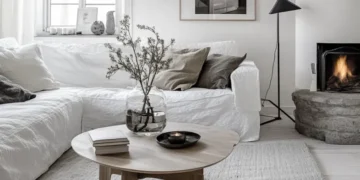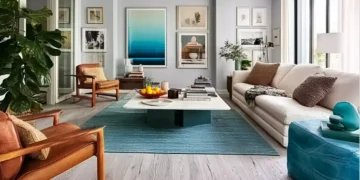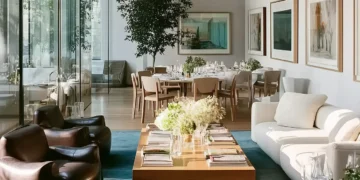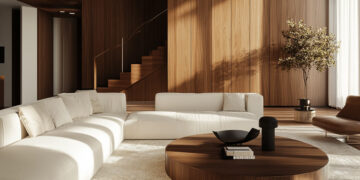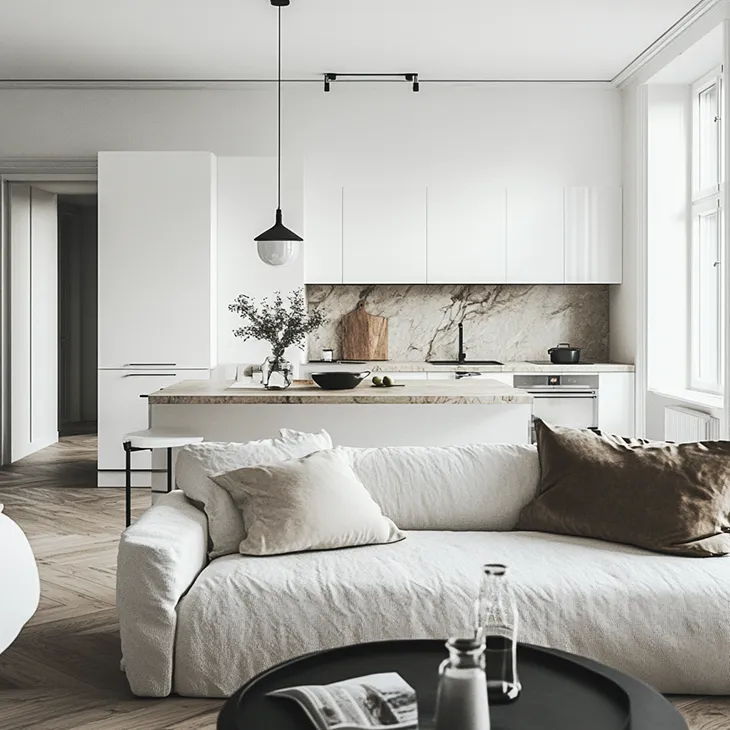
Scandinavian interior design is a style that emphasizes simplicity, functionality, and a deep connection to nature. Originating from Nordic countries like Sweden, Denmark, and Norway, this design philosophy has become a global favorite for its ability to create cozy yet practical living spaces. No matter if you are redesigning a single room or your entire home, Scandinavian design offers a timeless approach that blends beauty and functionality.
The Origins of Scandinavian Design
The style got global recognition in the 1950s. Influenced by the region’s cold climate and long winters, the style focuses on maximizing natural light and creating warm, inviting spaces. Its minimalistic approach stems from the Nordic tradition of valuing practicality and craftsmanship, which makes it stylish and enduring.
This design philosophy also draws inspiration from the concept of hygge, a Danish word meaning coziness and comfort. Hygge is about creating an environment that fosters well-being, relaxation, and a sense of togetherness, which aligns perfectly with the principles of Scandinavian design.
Key Characteristics of Scandinavian Interior Design
1. Minimalism with Warmth
Clean lines, uncluttered spaces, and a focus on functionality define this aesthetic. However, it also incorporates soft textures, neutral tones, and natural materials to ensure the space feels inviting.
Furniture in Scandinavian interiors is often multi-functional, such as a sofa bed or a dining table with extendable sections. These pieces are practical and contribute to the overall simplicity of the design.
2. Neutral and Earthy Color Palettes
The color palette in Scandinavian interiors is dominated by neutral tones such as white, gray, and beige, which help reflect light and make spaces feel open. These shades are often complemented by earthy tones like soft greens, browns, and muted blues. The result is a calm and soothing environment that promotes relaxation. Accents of brighter colors are sometimes added through textiles, artwork, or decorative objects, but these are kept minimal to maintain balance.
3. Emphasis on Natural Light
Large windows are often left uncovered or dressed with sheer curtains to allow maximum light to enter the space. Light fixtures, such as pendant lamps or wall sconces, are used strategically to enhance the brightness during the darker months.
Mirrors are another common feature, as they help reflect light and create a sense of depth. Placed thoughtfully, mirrors can make a small space feel larger and more open.
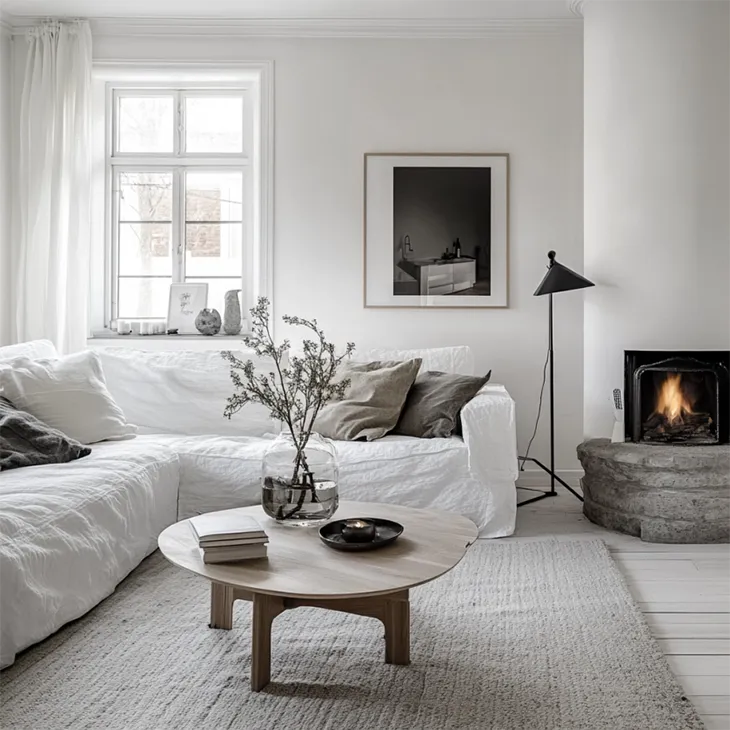
Materials and Textures in Scandinavian Design
Natural Materials
Scandinavian interiors prioritize natural materials to establish a connection with the outdoors. Wood is a staple, and it appears in furniture, floors, and decorative elements. Light woods like birch, pine, and oak are particularly popular, as they contribute to the bright and airy feel of the space.
Other materials like stone, leather, and wool are also commonly used to add texture and variety. These elements bring warmth and authenticity to the design, which makes the space feel cozy and lived-in.
Layered Textures
Soft textiles like wool throws, cotton cushions, and faux fur rugs add warmth and comfort. Layering different textures creates depth and visual interest, while still adhering to the clean and simple aesthetic.
Scandinavian Furniture and Layout
Functional and Simple Furniture
Scandinavian furniture is known for its sleek and timeless designs. Pieces are often characterized by clean lines, smooth curves, and a focus on functionality. Chairs, tables, and storage solutions are designed to be practical and aesthetically pleasing, which makes them staples of this style.
Multi-functional furniture is especially valued, as it aligns with the minimalist ethos. For instance, a bench that doubles as a storage unit combines practicality with style, a hallmark of Scandinavian interiors.
Open and Airy Layouts
The layout of a Scandinavian home is open and uncluttered. It promotes free movement and a sense of calm. Rooms are designed to feel spacious, even when the square footage is limited. This is achieved through strategic furniture placement that helps avoid overfilling the space and prioritizes functionality.
Storage is seamlessly integrated into the design, often hidden within furniture or built into walls to maintain the clean lines of the room. The emphasis on order and organization helps create a serene and clutter-free environment.
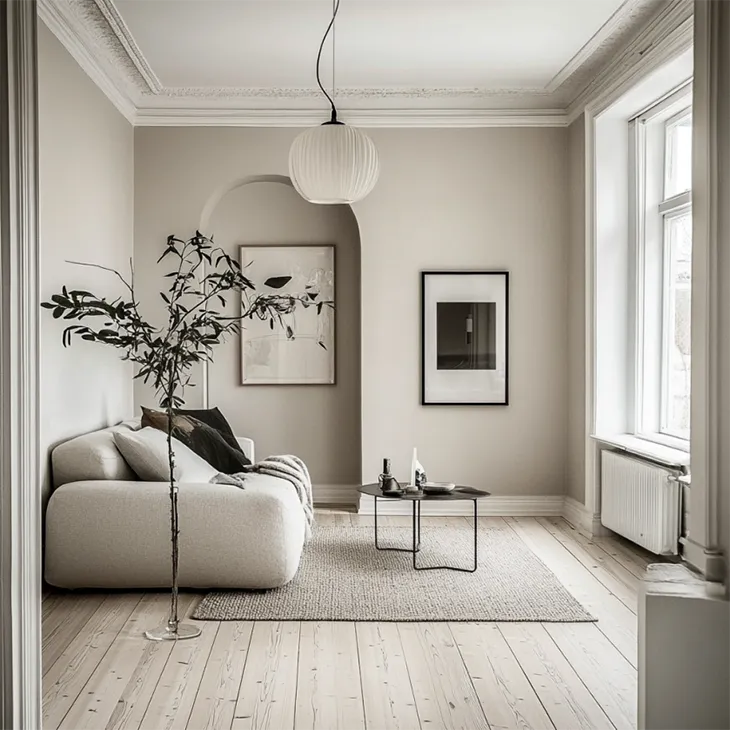
How to Decorate with Scandinavian Design
The Role of Plants
Plants are a simple and effective way to bring life and color into an interior. They connect the indoors with nature and align with the style’s emphasis on natural elements. Low-maintenance plants like snake plants, pothos, and rubber plants are popular choices.
Position plants in well-lit areas to emphasize their natural beauty and ensure they thrive. Incorporating greenery into your home can also improve air quality and boost mental well-being. Even a single plant can add a fresh and vibrant touch to an otherwise neutral space.
Thoughtful Use of Decor
Decorative objects in Scandinavian interiors are minimal but intentional. Items like vases, candles, or framed artwork are chosen for their ability to enhance the space without overwhelming it. Personal touches, such as family photos or handcrafted items, add warmth and character.
Wall art is typically understated and often features simple black-and-white photography or abstract designs. These pieces complement the neutral color palette while adding depth and interest.
Scandinavian Design for Different Rooms
● Living Room
A neutral sofa paired with a soft rug and layered cushions sets the tone for comfort. Wooden coffee and side tables provide functionality, while a statement light fixture adds a focal point.
Keep decorative elements minimal with the help of a few carefully chosen items like a ceramic vase or a small stack of books. Plants can be placed near windows or on shelves to bring in a touch of nature.
● Bedroom
Choose a low-profile bed with neutral bedding and add layers with blankets or throws for extra warmth. A soft area rug by the bed enhances comfort underfoot.
Bedside tables should be simple and functional, paired with a sleek table lamp for soft lighting. Decluttering is essential in the bedroom, so consider built-in closets or under-bed storage to maintain a clean and tranquil space.
● Kitchen and Dining Area
The kitchen and dining area in Scandinavian design are functional yet stylish. Light-colored cabinets, wooden countertops, and simple open shelves are common features. Lighting is crucial here, with pendant lamps often used above the dining table to create a warm and inviting ambiance.
Dining furniture is typically minimalist, with wooden tables and chairs that emphasize clean lines. A simple centerpiece, such as a small vase with fresh flowers, completes the look without adding any unnecessary clutter.
